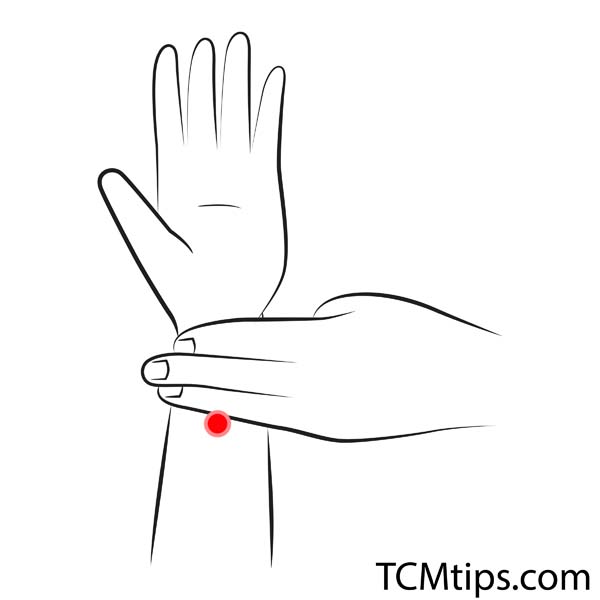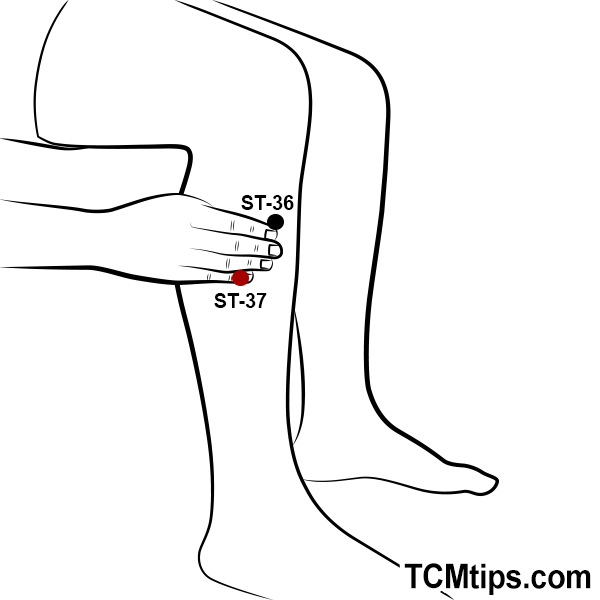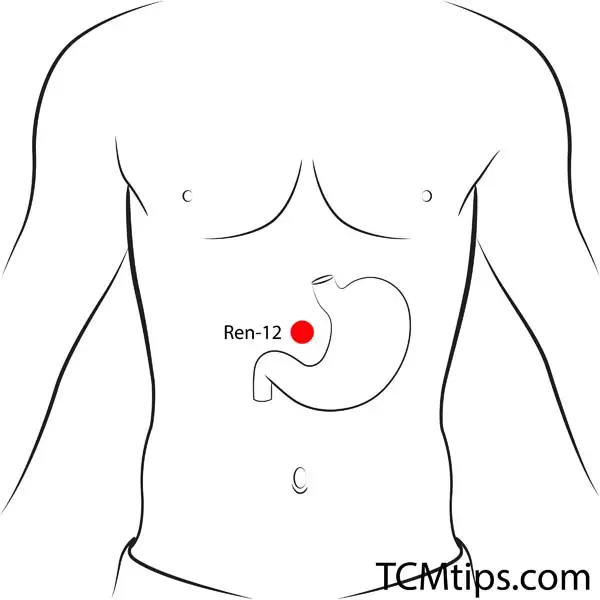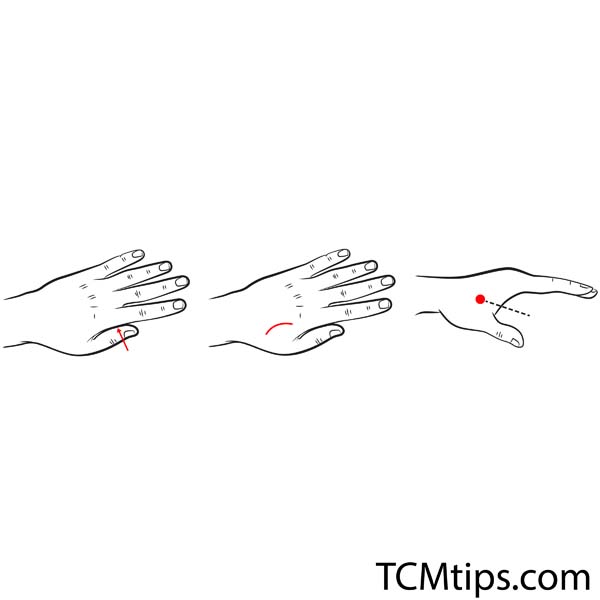Effective Acupressure Points for Nausea Relief: TCM Therapist’s Guide
Nausea is a common discomfort characterized by unease and an urge to vomit, often caused by factors such as digestive disorders, stress, and environmental changes. Traditional Chinese Medicine (TCM) offers holistic approaches to manage nausea, including acupressure. We consulted Ms. Mai Sogawa, a TCM Therapist from Japan, to share effective acupressure points and additional tips for relieving nausea.
PC-6 (Neiguan): Alleviating Stress-Induced Nausea

PC-6, or Neiguan, is a crucial acupressure point for relieving nausea, especially when linked to stress. Located on the inner forearm, three finger-widths above the wrist crease, this point helps calm the mind and ease discomfort.
- How to stimulate PC-6: Gently press and massage in a circular motion for 2-3 minutes.
ST-37 (Shangjuxu): Supporting Digestive Health

ST-37, known as Shangjuxu, addresses gastrointestinal disorders, a common cause of nausea. This point is located on the lower leg, four finger-widths below the kneecap, lateral to the shinbone.
- How to stimulate ST-37: Apply firm pressure and massage for a few minutes to aid digestion and relieve nausea.
Ren-12 (Zhongwan): Balancing the Middle Burner

Ren-12, or Zhongwan, is central for treating digestive issues. It is found on the abdomen, midway between the navel and the sternum, and helps balance the stomach and spleen.
- How to stimulate Ren-12: Gently press and massage in a circular motion for 2-3 minutes.
LI-4 (Hegu): A Multi-Functional Point

LI-4, also known as Hegu, is versatile, addressing symptoms like nausea and headaches. It is located on the back of the hand, between the thumb and index finger.
- How to stimulate LI-4: Apply firm pressure for 2-3 minutes to relieve discomfort.
TCM Tips for Easing Nausea: Considering Seasonal Influences
In TCM, nausea often results from imbalances such as dampness, heat, or Qi stagnation, which can be influenced by seasonal changes:
- Spring and Summer: Excess heat and humidity can disturb digestion. Consume cooling foods like cucumbers and leafy greens, and avoid spicy or greasy foods.
- Autumn: The dry air can reduce moisture, causing nausea. Eat moistening foods such as pears and honey, and stay hydrated.
- Winter: Cold weather can slow digestion. Opt for warm, cooked foods and ginger tea, which has warming properties.
These acupressure techniques and dietary adjustments can help manage nausea effectively. Persistent symptoms should be addressed with a healthcare provider.

Try our Anti-Aging Gua Sha Tool designed to bring out your skin’s natural glow.
Best Gua Sha Product- Anti-Aging: The tool is designed to target 11 specific aging signs such as wrinkles and sagging skin. By following the 7-step routine, users can improve skin firmness and reduce fine lines naturally.
- Enhances Skincare Routine: It works effectively with serums and lotions, boosting absorption and efficacy of skincare products.
- Visible Skin Improvement: Users can expect a smoother complexion, reduced puffiness, and a more youthful appearance.
 P. Sze
P. Sze 


















